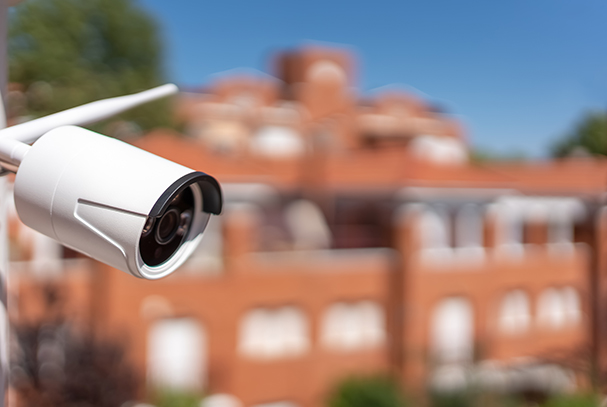The Importance of Quality Cabling in Security Camera Systems
In today’s fast-paced business environment, security is more critical than ever. Surveillance systems are not just a luxury but a necessity for businesses and commercial properties. However, the effectiveness of these systems often hinges on one crucial element: cabling.
High-quality cabling is essential for ensuring that your security camera system performs optimally, providing clear images and consistent coverage. Poor cabling can lead to signal loss, interference, and downtime, compromising your security.
This guide will help you understand the different types of cables used in security camera installations, how to choose the right cable, and best practices for installation, all to help you future-proof your security infrastructure.
Types of Cables Commonly Used in Security Camera Installations
Ethernet (Cat5e, Cat6, Cat6a)
Ethernet cables are widely used for IP camera systems. These cables support Power over Ethernet (PoE), which enables power and data transmission through a single cable, simplifying installation.
- Cat5e: Suitable for most basic installations, supporting up to 1 Gbps of data.
- Cat6: Offers higher performance with speeds up to 10 Gbps over shorter distances.
- Cat6a: The best option for future-proofing, handling high-speed data transmission over longer distances.
Coaxial Cables (RG59, RG6)
Coaxial cables are typically used in analog CCTV systems and HD over Coax systems like HDCVI, HDTVI, and AHD.
- RG59: Ideal for short-distance applications, offering good flexibility.
- RG6: Better suited for longer distances, providing superior shielding against interference.
Fiber Optic Cables
Fiber optic cables are the gold standard for long-distance and high-bandwidth applications.
- Single-mode fiber: Ideal for long-distance transmission.
- Multi-mode fiber: Suitable for shorter distances with high data rates.
Factors to Consider When Choosing the Right Cable
Distance
The distance between your cameras and the recording equipment plays a crucial role in determining the type of cable you need. Ethernet cables, for instance, have a maximum effective distance of around 328 feet (100 meters) without requiring a repeater.
Bandwidth
Consider the resolution and frame rate of your cameras. Higher resolution and frame rate require cables that can handle more data. Fiber optic cables offer the highest bandwidth capabilities, followed by Cat6a and Cat6 Ethernet cables.
Environmental Conditions
The installation environment can affect your choice:
- Outdoor Installations: Require weatherproof cables with UV resistance and possibly armored protection.
- High-Interference Areas: Use cables with superior shielding (e.g., Cat6a or coaxial RG6) to minimize signal loss.
Best Practices for Cabling Installation
Plan Your Layout
Before starting the installation, map out the layout to determine the best cable paths. This helps in minimizing cable length and avoiding potential interference sources.
Use Conduits and Trunking
Protect your cables from physical damage and environmental factors by using conduits and trunking wherever possible. This is especially important for outdoor installations.
Maintain Proper Spacing
Keep power cables separate from network cables to reduce electromagnetic interference. Follow industry standards for spacing to ensure optimal performance.
Test Your Cables
Before finalizing the installation, test all cables for continuity and signal strength. This can save time and resources by identifying issues early.
Future-Proofing Your Security System
Investing in the right cabling infrastructure today can save you significant costs and headaches in the future. Here’s how:
- Choose High-Quality Cables: Opt for Cat6a or fiber optic cables to ensure you can handle future data requirements without needing a complete overhaul.
- Plan for Expansion: Install extra conduits and cable runs to accommodate future cameras and equipment.
- Stay Updated: Keep abreast of technological advancements in security systems to upgrade your infrastructure as needed.
Prioritize Your Security Infrastructure
Investing in quality cabling is crucial for the efficiency and reliability of your security camera system. Whether you’re setting up a new system or upgrading an existing one, choosing the right cables and following best practices will ensure optimal performance and longevity.
Ready to enhance your security infrastructure? Reach out to ADD Communications today for a consultation and ensure your business is protected with the best cabling solutions available.
